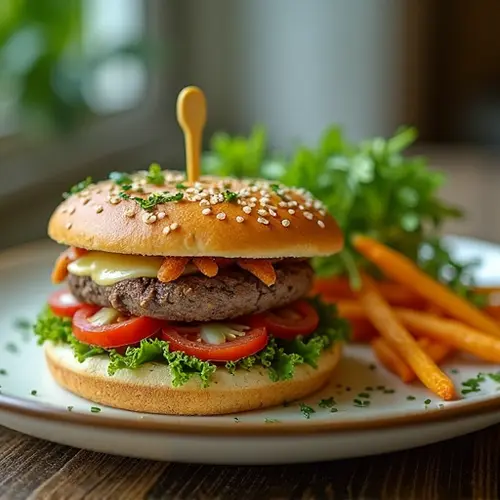
The Future of Dining Is Here
Imagine biting into a perfectly shaped shrimp that never swam in the ocean or a nutrient-packed steak that required no cattle. This isn't science fiction - it's the reality of 3D printed food technology that's transforming how we eat. Companies like Steakholder Foods are leading this culinary revolution with their DropJet and Fusion printers that create everything from plant-based seafood to personalized nutrient blends.
How Food Printing Works
3D food printers work similarly to conventional 3D printers but use edible "inks" instead of plastic. These printers deposit ingredients layer by layer through specialized nozzles, building complex food structures impossible to create by hand. The magic lies in "NutriBlend" - proprietary formulations that combine proteins, carbohydrates, and micronutrients to mimic traditional foods' taste and texture while offering customization options.
Breakthrough Innovations
Recent milestones include:
- Steakholder Foods' plant-based shrimp and eel that fool seafood lovers
- Personalized nutrition capsules with probiotics and vitamins
- Whole-cut meats with authentic marbling and texture
- NASA-approved space meals for long-duration missions
"Our products can compete with animal-based foods in taste, texture, and soon price," says Steakholder CEO Arik Kaufman. The company expects to deliver its first commercial printers this year, with restaurant partnerships already in development.
Nutrition Customization Revolution
The real game-changer is personalized nutrition. Researchers are now embedding probiotics, vitamins, and medications directly into food matrices. A recent study in Future Foods shows how 3D printing allows precise probiotic placement to ensure survival through digestion. This means meals could soon be tailored to individual health needs - think anti-inflammatory diets for arthritis sufferers or immune-boosting meals during flu season.
Challenges Ahead
Despite exciting progress, hurdles remain:
- Scaling production while maintaining food safety
- Consumer skepticism about "printed" foods
- Regulatory frameworks for novel ingredients
- Cost reduction for mainstream adoption
Food scientists are addressing these by developing daily-cleanable systems and transparent labeling. "Anyone who tastes our products is overwhelmed by how similar they are to the real thing," Kaufman notes, emphasizing that education will be key to consumer acceptance.
What's Next for Food Tech?
The future looks flavorful:
- Home food printers by 2028 (projected)
- Hybrid plant/cultivated meat products
- Restaurants offering on-demand nutritional customization
- Reduced food waste through precise ingredient use
As 3D food printing evolves from novelty to necessity, it promises not just futuristic meals but solutions to food security, sustainability, and personalized health - making every bite count in ways we've never imagined.

 Nederlands
Nederlands
 English
English
 French
French
 Deutsch
Deutsch
 Espaniol
Espaniol
 Portugese
Portugese



